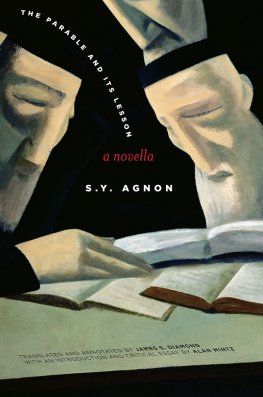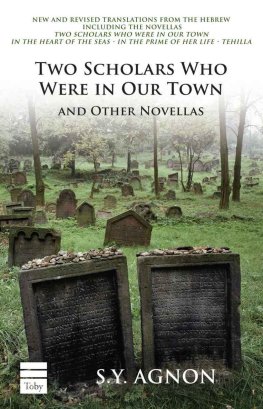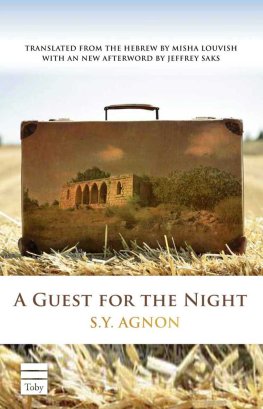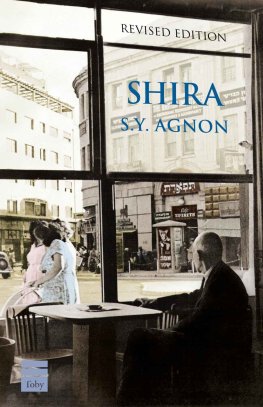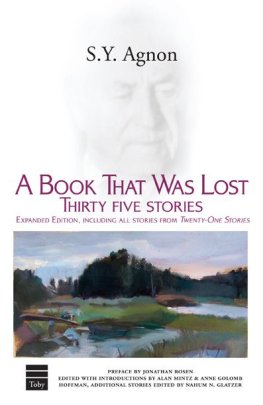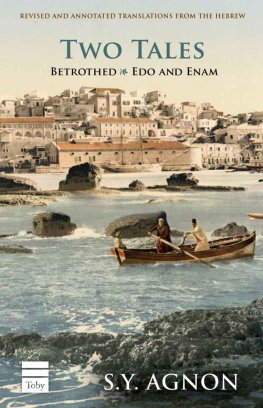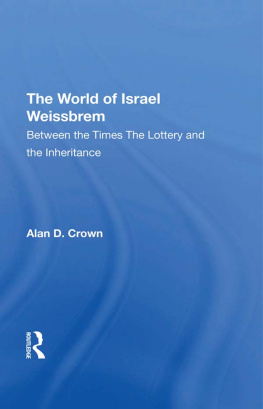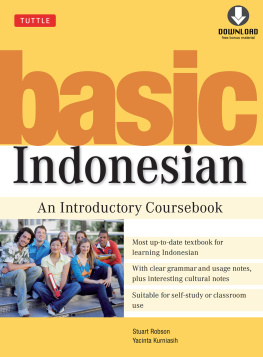S. Y. Agnon
The Parable and Its Lesson: A Novella
James S. Diamond (19392013)
IN MEMORIAM

Printed with permission of Beit Agnon.
The decisions of the Nobel committee on literature have often been curious, but the award of the prize for 1966 to S. Y. Agnon (together with Nelly Sachs) was not one of those instances. At the time, Agnon was generally regarded as the greatest modern Hebrew writer, and the prize richly deserved. It was also an important moment for Israel and its citizens because this was the first time and so far the only time a Hebrew writer was given the award, and the honor was taken as a recognition of the achievements of this new literature in general. Agnon lived just long enough to take great pleasure in the honor and to enjoy the tributes given him not only in Israel but in the United States, which he visited for the first time the year after the award. Agnon died in 1970 at the age of eighty-two.
Agnons output was prodigious. He wrote and published continuously from 1905 to his death, after which fourteen more volumes appeared, to be placed alongside the several versions of the collected stories and novels that came out in his lifetime. Agnon was a ceaseless rewriter, and there is scarcely a major text in his oeuvre that has not undergone several revisions. Although Agnons forte was the story in all its short and long forms, he also wrote five major novels and devoted himself to compiling thematic anthologies of Jewish classical sources. Rather than turning from one form and immersing himself in another, Agnon would typically work on several projects in different genres at one time. Because the ongoing body of his work is dynamic, polyphonic and unstable, it has been difficult for critics to divide Agnons career into usefully identifiable phases. Yet despite these challenges, most students of Agnon would point to the twenty years following his return to Palestine from Germany in 1924 as the high water mark in the masters career. All of his novels were published or written during this time, as were the modernist parables collected in The Book of Deeds [Sefer Hamaasim]. These latter were the stories that changed the way contemporary readers perceived Agnon. Initially viewing him as a teller of nave tales of Polish Jewry, readers subsequently came to accept him as an ironic modern master.
From the end of World War Two to his death, Agnon continued to write, revise and publish prolifically, but the work produced during this period seemed to most critics to be a continuation of the various modes, genres and themes of his earlier writing. It is generally assumed that this creative activity was aimed at tying up loose ends, bringing projects to fruition and extending the range of previously secured innovations.
It is now clear that this conception of Agnons last phase needs to undergo a fundamental revision. We can now see that one of Agnons postwar projects was entirely new: a preoccupying, ambitious, large-scale undertaking that represented a fundamental rethinking of the masters relationship to the world of Eastern Europe. This is the epic cycle of stories close to 150 of them written during the 1950s and 1960s about Buczacz, the Galician town, today in the eastern Ukraine, in which Agnon grew up and lived until his emigration to Palestine at the age of nineteen in 1907. None of the material appears in any earlier collection. The whole was compiled by the Agnons daughter Emumah Yaron, according to her fathers instructions, and published under the title Ir umeloah [A City in Its Fullness] in 1973. The story cycle endeavors to give an account of Buczacz during the two hundred years that followed the devastating Khmelnitski massacres of 1648. Taken together, the stories constitute Agnons comprehensive effort, after the annihilation of European Jewry, to think through the question of what from that lost culture should be retrieved through the resources of the literary imagination. Ir umeloah was hardly noticed when it was published, and it remains largely unknown to the non-Hebrew reading world. Yet I would argue that it is one of the most extraordinary responses to the murder of European Jewry in modern Jewish writing. Hamashal vehanimshal, the novella from that collection presented and translated here as The Parable and Its Lesson, reaches back in time to explore the responses to the 1648 massacres in light of our implicit awareness of the great catastrophe of our era. It is a good representative of the larger project of the Buczacz tales because it is concerned both with capturing the pathos of a historical moment in the fortunes of the city and with the ways in which narrative and voice refract reality. Agnons passion remained the disingenuous act of storytelling. The Parable and Its Lesson, with its two narrators and sustained monologue and intriguing fissures, provides an excellent instance of Agnons mature narrative energies at full tilt.
What is Agnon for us today? Does he number among those once-famous writers who now seem to belong to another time and another world of taste? To be sure, his portrait and quotations from his Nobel Prize speech appear on the fifty-shekel note in Israel, but that only guarantees him a place alongside other forgotten founders. Or does Agnons work qualify as being a true classic, if we understand a classic as literature that, despite its rootedness in a particular time and place and conventions of writing, nonetheless possesses enough surplus of meaning to speak to us now? For the present, Agnons place among cultured readers in Israel is secure, although the increasing polarization between secular and religious culture may eventually endanger that status; for the former he may come to seem too foreign and the for latter impure simply for being literature. For young people, Agnon is one of those standard authors you have to get through for exams, even though sensitive readers will often rediscover him as adults. Reading Agnon is not easy. Even committed and discriminating readers who are native speakers of Hebrew have to deal with many unfamiliar references, especially if they lack a background in traditional Jewish texts. The fact that Agnon continues to be read despite these obstacles provides evidence for the claim that he is indeed a classic.
But for a true classic, there is an additional high hurdle: translatability. When the nuances and the echoes and puns and the rhythm are shorn from the work, does it still excite us? In Agnons case the record is mixed. The translators who have sought to preserve the special strangeness of Agnons Hebrew have been less successful than those who have been willing to sacrifice a great deal in order to create a simulacrum that works as literature in English. It of course makes a great deal of difference what kind of Agnon is being translated. He wrote continuously for more than sixty years, and he wrote in different genres. For example, his first novel, Hakhnasat kalah [The Bridal Canopy, 1931] concerns the peregrinations of a poor Hasid in search of a dowry for his daughters among the townlets of Galicia in the early nineteenth century. This sprawling comic narrative is heavy with biblical allusions and parodies of religious practices and anecdotes about rabbinic sages. Putting such a work into English it was done, unevenly, by I. M. Lask in 1967throws up a very different set of problems than works written in a mode closer to European realism, such as Agnons second novel, Sipur pashut [A Simple Story, 1935], translated, superbly, by Hillel Halkin in 1985. Set in Agnons hometown of Buczacz in the years before World War One, the novel follows the psychological breakdown and recovery of the son of an established merchant family. Although here too there are allusions and submerged subtexts, the object of representation is a much more familiar bourgeois world in which religious learning plays little role.

